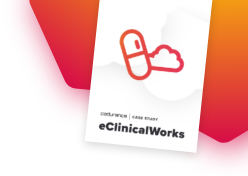
CIP Steering Group
CIP’s main stakeholders and sponsors. They are responsible for business and technical vision. They provide strategy directions and organisational support.

For a better experience please rotate your device

CIP’s main stakeholders and sponsors. They are responsible for business and technical vision. They provide strategy directions and organisational support.

Initiative incubation process where initiatives are aligned to business goals by the Operations Group and approved (or rejected) by the Steering Group

Good practices, architecture, technologies, automation, and processes that emerges from the work done by CIP teams and can be widely adopted.

Software delivery teams aligned to specific areas of the organisation. They learn, adopt and benefit from CIP innovations and golden standards.

Responsible for identifying and governing strategic initiatives, success of execution and cultural change. Fully dedicated to the CIP. Report directly to the Steering Group.

A prioritised list of approved CIP strategic initiatives to be distributed to and executed by CIP teams. The CIP backlog is governed by the Operations Group.

Strategic improvements incrementally delivered by the CIP teams. They are delivered using Test-Driven Development (TDD), CI/CD, and Clean Code.

Codurance provides technical and organisational consultants for the Operations Group and also cross-functional and high-skilled CIP teams.

Vertical and horizontal areas of the organisation or product. The Operations Group work with the leadership of each area to identify strategic improvements.

High-skilled, disciplined and cross-functional teams. They master Extreme Programming practices and the Software Craftsmanship mindset.

The Operations Group and CIP teams are responsible for systemic knowledge sharing, ensuring the wider organisation adopts innovations and golden standards.
Using our CIP framework, refined across a decade of successful customer engagements, you will gain measurable improvements

There are many different types of software modernisation techniques. They are solutions aimed at different problems and goals and are often combined under one or more CIP strategic initiatives. Here are just a few examples of the most common technical initiatives:
Don’t just take our word for it. We have delivered CIP to many leading enterprises where the only constant is change including

The largest Cloud EHR in the United States entrusted us to guide their modernisation strategy - a formidable project to deliver while 1 million doctors, nurse practitioners and medical professionals continue to rely upon it daily to help them provide quality care worldwide.
Download Case Study
The UK’s largest independent online fashion and beauty retailer worked with Codurance to work alongside their technology teams to train and coach them on how to continuously improve technology and practices.
Download Case StudyIan Kershaw
Software Engineering Director at Cazoo




Find out how Codurance’s solutions can help your business.